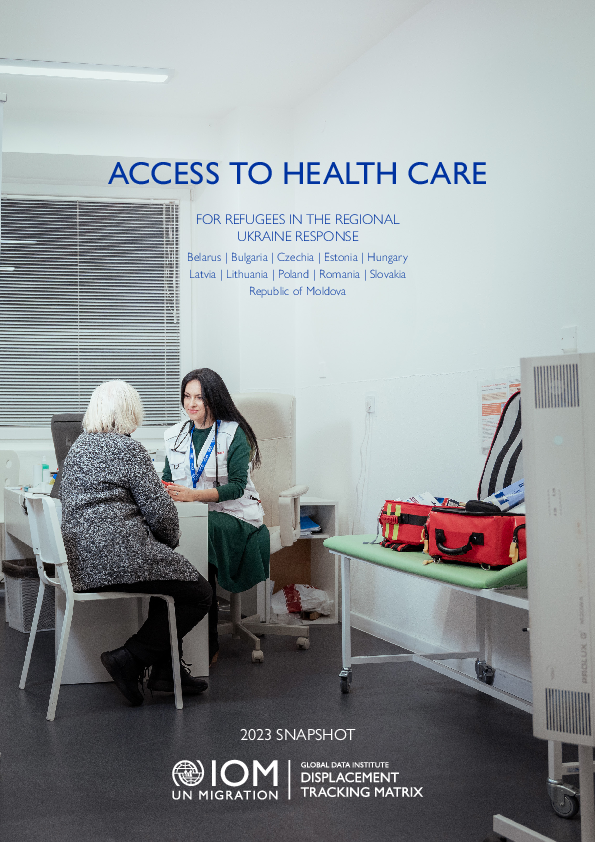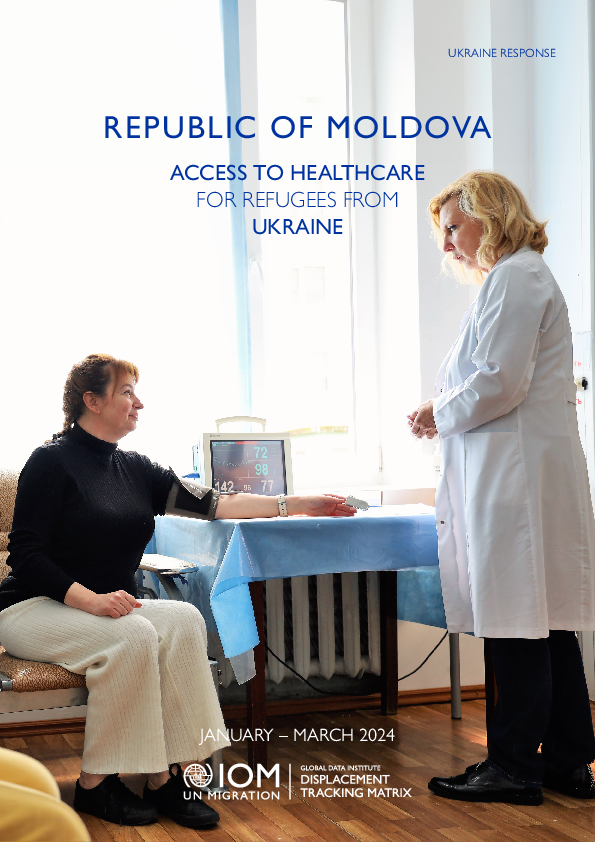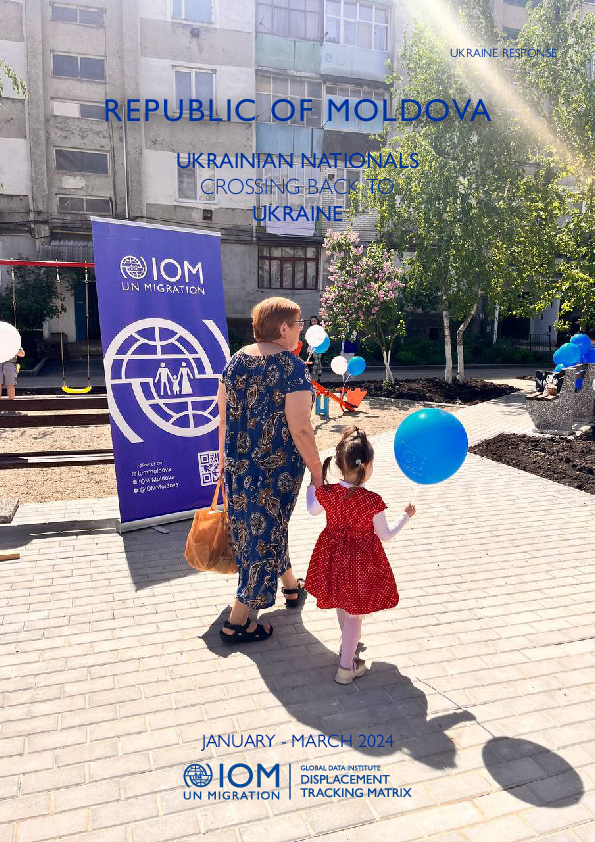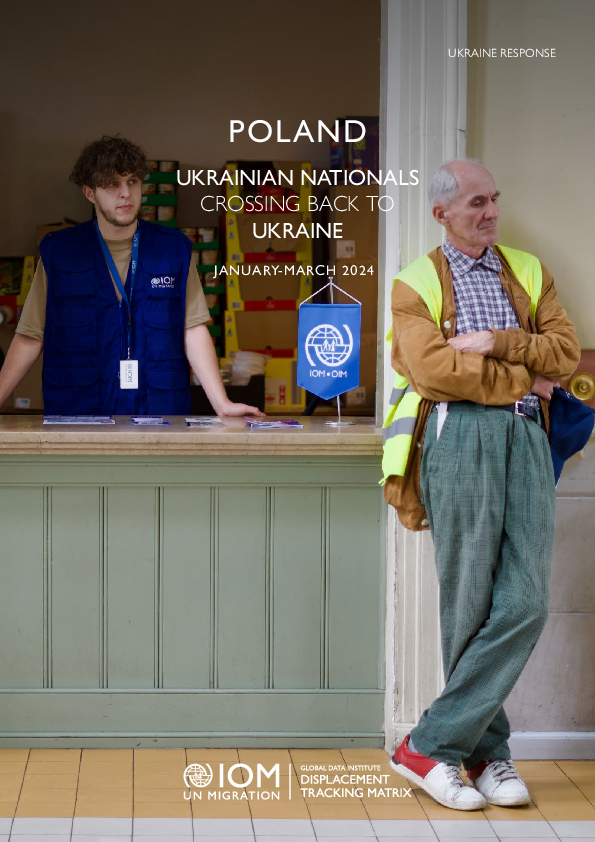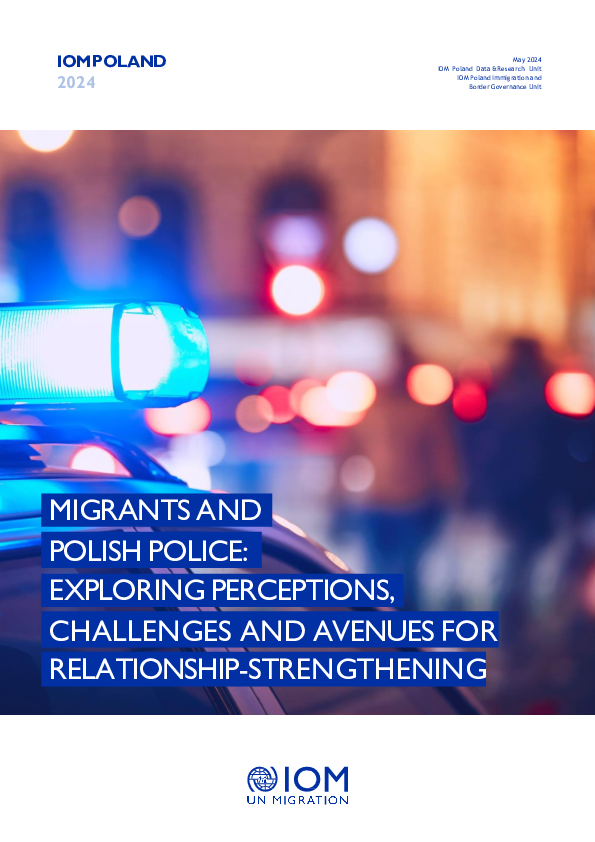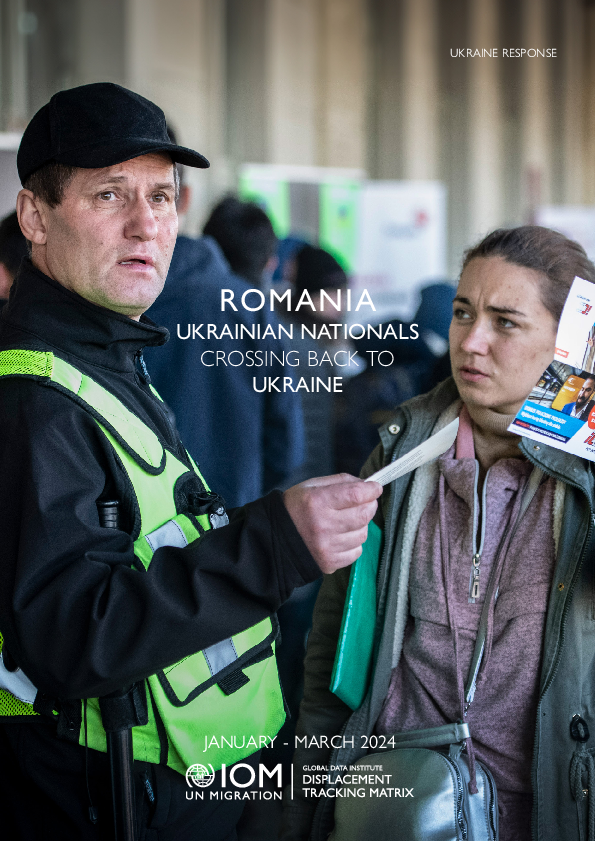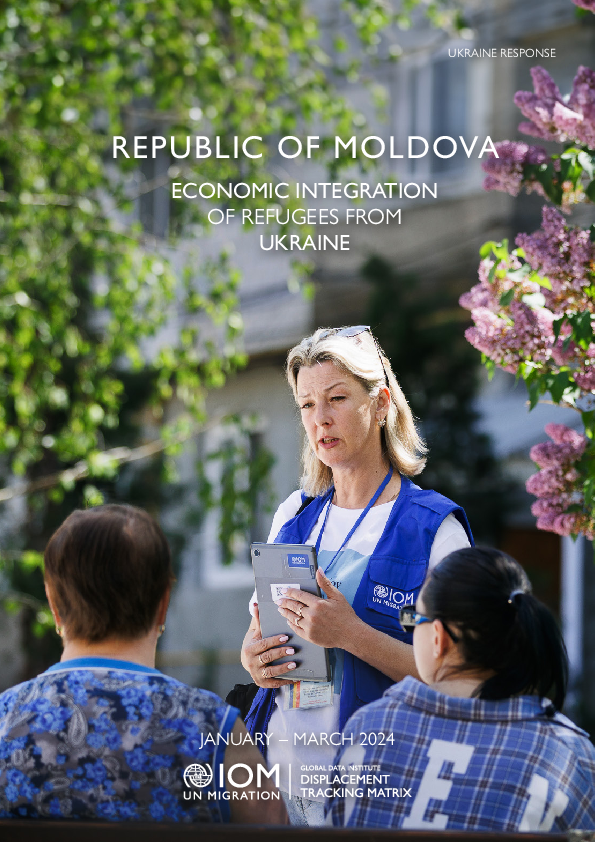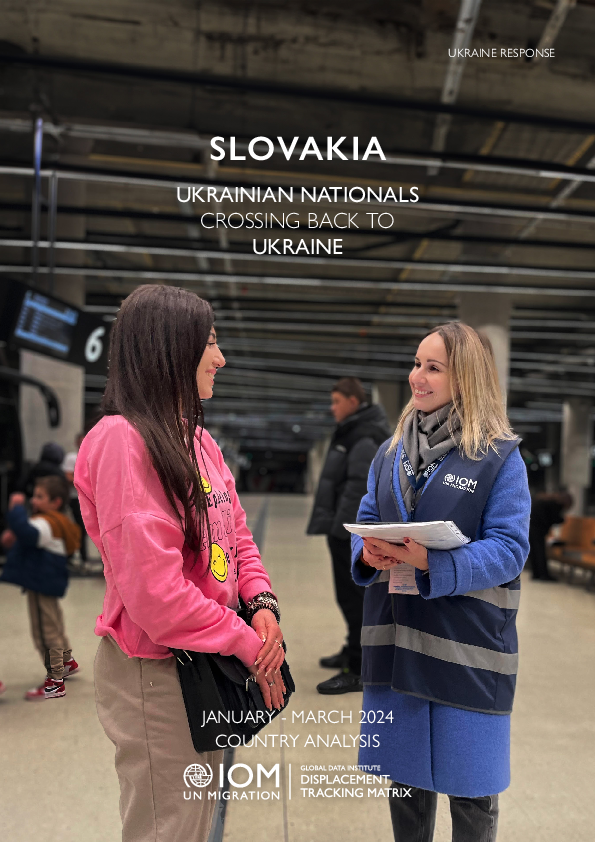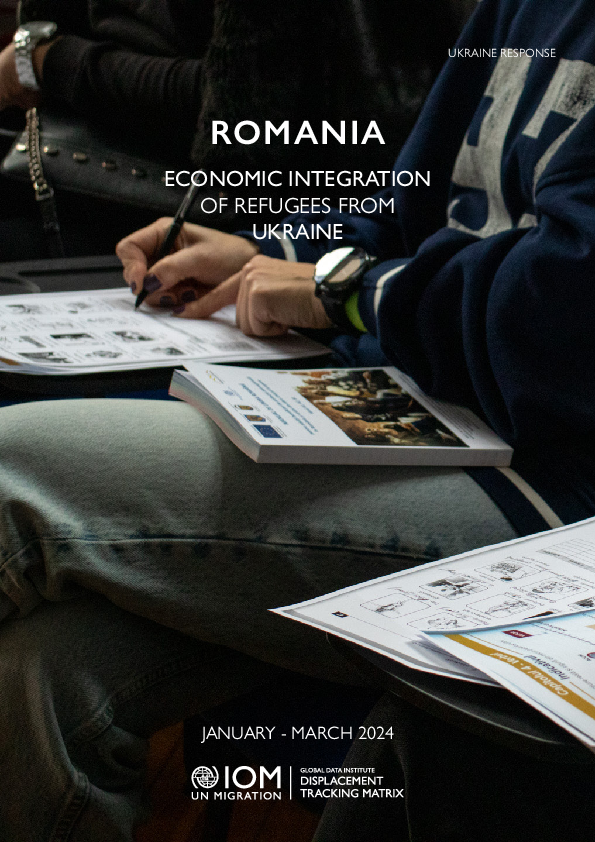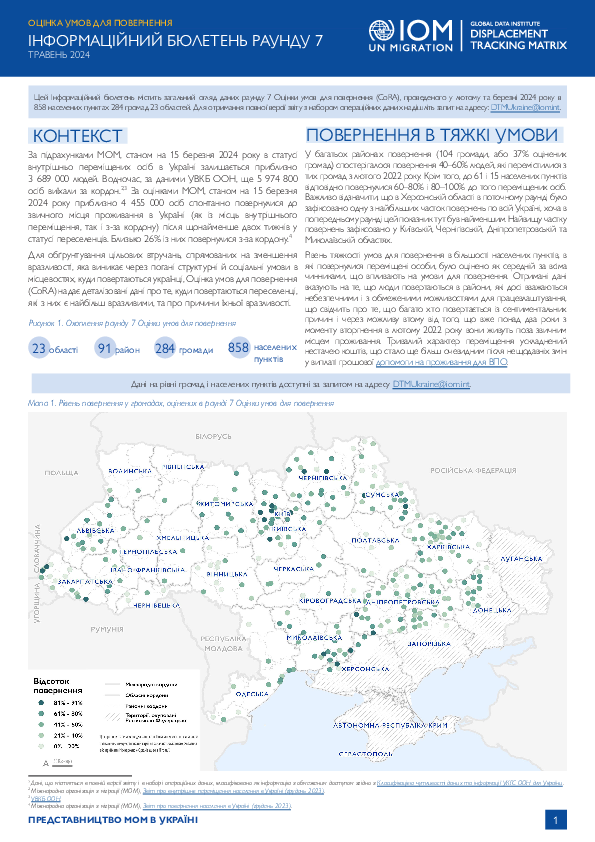-
Countries
-
Data and Analysis
-
Special Focus
-
Crisis Responses
Ukraine Response
Error message
The submitted value field_published_date_value in the Sort by element is not allowed.
Feb 07 2023
Print
Since the start of the war in Ukraine in February 2022, IOM has worked to provide direct assistance to affected populations but has also provided a better understanding of these individuals’ situations, aiming at improving and consolidating the crisis response efforts undertaken by IOM, governments, and the international community.
IOM’s Displacement Tracking Matrix (DTM) programme seeks to understand where affected people are, their most urgent needs, and their intentions for the coming period. IOM has conducted surveys across Ukraine and the region, providing crucial insights to inform evidence-based humanitarian actions and policy.
Inside Ukraine, IOM has implemented consecutive rounds of representative general population survey since March 2022, tracking internal displacement and mobility flows. This survey gathers insights into the situation and needs of vulnerable population groups across thematic areas, applying intersectoral approach to collect information. IOM has also built a field presence and a network of key informants across 20 regions of Ukraine and the capital city, monitoring the recorded presence of IDPs at municipality level through regular baseline assessments.
Furthermore, IOM has conducted a number of studies in neighbouring to Ukraine countries: Belarus, Republic of Moldova, Romania, Hungary, Poland, and Slovakia to survey the needs and intentions of those fleeing from the war and those crossing back to Ukraine. In addition to this, IOM has enlarged the scope of the DTM tool to assess the situation concerning Ukrainian refugees and Third-Country Nationals (TCNs) that continued their onwards journey and reached further destinations in Europe: Czechia, the Baltics, Western Balkans as well as Belgium, Germany, and France.
Through IOM’s assessments, governments and the humanitarian community are able to quickly identify the needs, movements, and intentions of affected persons and to further consolidate humanitarian interventions in support of the internally displaced populations in Ukraine, and the Ukrainian refugees and TCNs fleeing from war to other countries in Europe
Countries in this response
- Active DTM operation
- Past DTM operation
Check out the interactive dashboard
Ukraine Regional Response: Needs, Intentions, and Border Crossings
Check out the interactive dashboard
Registered IDP Area Baseline Assessment Dashboard (ABA)
Ukraine Response — Regional Analysis — Access to Health Care — Annual Snapshot (2023)
From January to December 2023, IOM’s Displacement Tracking Matrix (DTM) collected data on the Needs, Intentions, and Integration Challenges of refugees from Ukraine and Third-Country Nationals (TCNs) in 11 countries in the Ukraine Response: Belarus, Bulgaria, Czechia, Estonia, Hungary, Latvia, Li
Republic of Moldova — Access to Healthcare for Refugees from Ukraine (January - March 2024)
The IOM’s Displacement Tracking Matrix collected data through Surveys with refugees in the Ukraine Response region from January to March 2024. In the Republic of Moldova, a total of 1,507 surveys were collected.
Republic of Moldova — Ukrainian Nationals Crossing Back to Ukraine (January - March 2024)
IOM’s Displacement Tracking Matrix (DTM) collects data on Ukrainian nationals and Third-Country Nationals (TCNs) that were crossing back to Ukraine from or through the Republic of Moldova, either for temporary stay or prospective return.
Poland — Ukrainian Nationals Crossing Back to Ukraine (January - March 2024)
IOM’s Displacement Tracking Matrix (DTM) collected data on Ukrainian nationals and Third-Country Nationals (TCNs) who crossed back to Ukraine from Poland, either for a temporary stay or permanent return after a period of displacement abroad.
Poland — Migrants and Polish Police: Exploring perceptions, challenges and avenues for relationship-strengthening (December 2023 - April 2024)
This study aims to provide insights into interactions, perceptions, and potential areas for improvement in the relationship between non-Ukrainian migrants in Poland and Polish law enforcement with a specific focus on the Polish Police.
Romania — Ukrainian Nationals Crossing Back to Ukraine (January - March 2024)
IOM’s Displacement Tracking Matrix (DTM) collected data on Ukrainian nationals and TCNs (resided in Ukraine before 24 February 2022) that were crossing back to Ukraine from or through Romania, either temporarily or permanently.
Republic of Moldova — Economic Integration of Refugees from Ukraine (January - March 2024)
The IOM’s Displacement Tracking Matrix collected data through Surveys with Refugees in the Ukraine Response region from January to March 2024. In the Republic of Moldova, a total of 1,507 surveys were collected.
Slovakia — Ukrainian Nationals Crossing Back to Ukraine (January - March 2024)
IOM’s Displacement Tracking Matrix (DTM) collected data on Ukrainian nationals and Third-Country Nationals (TCNs) that crossed back to Ukraine from or through Slovakia, either temporarily or permanently.
Україна — Тематичний нарис — З місця на місце: Сприйняття громадами проблеми переміщення та довгострокових рішень в Україні (травень 2024)
Війна в Україні спричинила масове переміщення населення: близько 3,7 мільйона людей були змушені покинути свої домівки, землю та сім'ї.
Romania — Economic Integration of Refugees from Ukraine (January - March 2024)
IOM’s Displacement Tracking Matrix (DTM) collected data through Surveys with Refugees in the Ukraine Response region from January to March 2024.
Україна — Оцінка умов для повернення — Інформаційний бюлетень — Раунд 7 (травень 2024)
За оцінками МОМ, станом на 15 березня 2024 року близько 3 689 000 осіб залишалися внутрішньо переміщеними особами в Україні, тоді як УВКБ ООН зазначає, що ще 5 930 400 осіб були переміщені за кордон.
Ukraine — Internal Displacement Report — General Population Survey Round 16 (April 2024)
Between 10 March and 11 April 2024, the International Organization for Migration (IOM) conducted Round 16 of the General Population Survey (GPS), a highly representative assessment of internal displacement in Ukraine.
Pagination
Ukraine — Area Baseline Assessment (Raion level) — Round 19
Jan 17 2023
A baseline assessment is a sub-component of mobility tracking. It aims to collect data on IDP, migrant or returnee population presence in a defined administrative area of the country.
Ukraine — Area Baseline Assessment (Hromada level) — Round 18
Dec 21 2022
<p>A baseline assessment is a sub-component of mobility tracking. It aims to collect data on IDP, migrant or returnee population presence in a defined administrative area of the country.</p>
Ukraine — Area Baseline Assessment (Raion level) — Round 18
Dec 21 2022
A baseline assessment is a sub-component of mobility tracking. It aims to collect data on IDP, migrant or returnee population presence in a defined administrative area of the country.
Ukraine — Area Baseline Assessment (Hromada level) — Round 17
Dec 06 2022
<p>A baseline assessment is a sub-component of mobility tracking. It aims to collect data on IDP, migrant or returnee population presence in a defined administrative area of the country.</p>
Ukraine — Area Baseline Assessment (Raion level) — Round 17
Dec 05 2022
A baseline assessment is a sub-component of mobility tracking. It aims to collect data on IDP, migrant or returnee population presence in a defined administrative area of the country.
Ukraine — Area Baseline Assessment (Hromada level) — Round 16
Nov 16 2022
<p>A baseline assessment is a sub-component of mobility tracking. It aims to collect data on IDP, migrant or returnee population presence in a defined administrative area of the country.</p>
Ukraine — Area Baseline Assessment (Raion level) — Round 16
Nov 16 2022
A baseline assessment is a sub-component of mobility tracking. It aims to collect data on IDP, migrant or returnee population presence in a defined administrative area of the country.
Ukraine — Area Baseline Assessment (Raion level) — Round 15
Nov 03 2022
A baseline assessment is a sub-component of mobility tracking. It aims to collect data on IDP, migrant or returnee population presence in a defined administrative area of the country.
Ukraine — Area Baseline Assessment (Hromada level) — Round 15
Nov 03 2022
<p>A baseline assessment is a sub-component of mobility tracking. It aims to collect data on IDP, migrant or returnee population presence in a defined administrative area of the country.</p>
Ukraine — Area Baseline Assessment (Hromada level) — Round 14
Oct 20 2022
<p>A baseline assessment is a sub-component of mobility tracking. It aims to collect data on IDP, migrant or returnee population presence in a defined administrative area of the country.</p>
Ukraine — Area Baseline Assessment (Raion level) — Round 14
Oct 20 2022
A baseline assessment is a sub-component of mobility tracking. It aims to collect data on IDP, migrant or returnee population presence in a defined administrative area of the country.
Ukraine — Area Baseline Assessment (Raion level) — Round 13
Oct 07 2022
A baseline assessment is a sub-component of mobility tracking. It aims to collect data on IDP, migrant or returnee population presence in a defined administrative area of the country.
Ukraine — Area Baseline Assessment (Hromada level) — Round 13
Oct 07 2022
<p>A baseline assessment is a sub-component of mobility tracking. It aims to collect data on IDP, migrant or returnee population presence in a defined administrative area of the country.</p>
Ukraine — Area Baseline Assessment (Hromada level) — Round 12
Sep 21 2022
<p>A baseline assessment is a sub-component of mobility tracking. It aims to collect data on IDP, migrant or returnee population presence in a defined administrative area of the country.</p>
Ukraine — Area Baseline Assessment (Raion level) — Round 12
Sep 21 2022
A baseline assessment is a sub-component of mobility tracking. It aims to collect data on IDP, migrant or returnee population presence in a defined administrative area of the country.
Ukraine — Area Baseline Assessment (Raion level) — Round 11
Sep 06 2022
A baseline assessment is a sub-component of mobility tracking. It aims to collect data on IDP, migrant or returnee population presence in a defined administrative area of the country.
Ukraine — Area Baseline Assessment (Hromada level) — Round 11
Sep 06 2022
<p>A baseline assessment is a sub-component of mobility tracking. It aims to collect data on IDP, migrant or returnee population presence in a defined administrative area of the country.</p>
Ukraine — Area Baseline Assessment (Raion level) — Round 10
Aug 31 2022
A baseline assessment is a sub-component of mobility tracking. It aims to collect data on IDP, migrant or returnee population presence in a defined administrative area of the country.
Ukraine — Area Baseline Assessment (Hromada level) — Round 10
Aug 31 2022
<p>A baseline assessment is a sub-component of mobility tracking. It aims to collect data on IDP, migrant or returnee population presence in a defined administrative area of the country.</p>
Ukraine — Area Baseline Assessment (Raion level) — Round 9
Aug 09 2022
A baseline assessment is a sub-component of mobility tracking. It aims to collect data on IDP, migrant or returnee population presence in a defined administrative area of the country.


